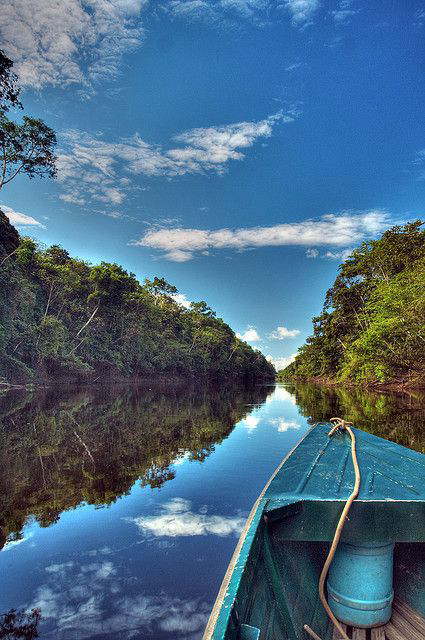"The Big and Amazing Amazon Forest in Brazil"

The Amazon rainforest is considered the largest tropical forest in the world and has enormous biodiversity. In addition, it is part of the Amazon biome, the largest of the six Brazilian biomes.
It corresponds to 53% of the remaining tropical forests. Therefore, its conservation is debated internationally, because of its size and ecological importance.
Main features
The amazon forest
The Amazon rainforest is considered a natural sanctuary
Location
The Amazon rainforest is located in the north of South America, covering the states of Amazonas, Acre, Amapá, Rondônia, Pará and Roraima, as well as smaller Peru, Colombia, Venezuela, Ecuador, Bolivia, Guyana, Suriname, and French Guiana.
Climate:
Because it is located near the equator, the Amazon rainforest has an equatorial climate. Thus, it is marked by high temperatures and humidity of the air.
Average annual temperatures range from 22 to 28 ° C and the air humidity can exceed 80%. Another characteristic is the high pluviometric index that varies between 1,400 to 3,500 mm per year.
In general, the seasons of the year in the forest are distinguished by two periods: dry and rainy.
Ground:
The soil of the Amazon rainforest is considered poor with a thin layer of nutrients. However, the humus formed by the decomposition of organic matter, ie leaves, flowers, animals and fruits is rich in nutrients used for the development of species and forest vegetation.
Flora:
The Amazon rainforest is a dense tropical forest, formed by large trees.
The vegetation is divided into:
Mata de várzea: Located in low areas, it suffers periodic flooding, as the floods of rivers. The soils of the várzea are extremely fertile due to the sediments deposited by the waters of the rivers. Some species of the várzea are: andiroba, jatobá, rubber tree and samaúma.
Located in even lower areas it suffers permanent flood, therefore it is always flooded. To survive this condition, plants have different strategies and adaptations. Examples of igapó species are: regalia, buritis, orchids and bromeliads.
Terra firme forest: Found in most of the Amazon rainforest, it does not suffer floods because it is located in higher areas. The vegetation is larger, such as the chestnut tree.
Fauna:
Besides the lush flora, the Amazon rainforest also hosts several animal species.
Some animals found are: jaguars, pigeons, ocelots, manatees, pirarucus, jabutis, ariranhas, toucans, macaws, jiboia, sucuri.
Biodiversity:
The biodiversity of the Amazon rainforest is exuberant and its numbers impress:
More than 1,300 species of birds;
More than 3,000 species of fish;
More than 30,000 species of plants;
1,800 species of butterflies;
427 species of amphibians;
378 species of reptiles;
Up to 3,000 species of bees;
311 species of mammals.
It should be noted that many of these species are endemic, that is, they only exist in the Amazon region. Therefore, the conservation of the forest is of extreme importance.
Equatorial forest
Amazon Basin
Animals in Extinction in the Amazon Forest
Threats
Deforestation in the Amazon
Deforestation advances and threatens the conservation of the Amazon rainforest
Many environmental problems affect the Amazon rainforest, the main ones are:
Deforestation
Burned
Pasture farming
Land dispute
Human Settlements
Hunting and illegal fishing
In 1995, it was the year in which the greatest deforestation occurred in the Amazon Forest. In Brazil, the state of Pará is the record holder in deforestation in the Amazon.
Deforestation in the Amazon releases significant amounts of greenhouse gases. Therefore, the reduction of deforestation is the best action for Brazil to reduce its level of emission of gases and contribute to the reduction of the greenhouse effect and consequently of global warming.
So beautiful and extremely natural
Yeah! Really wonderful! Its the big gift from God for us! Thanks so much ! =D